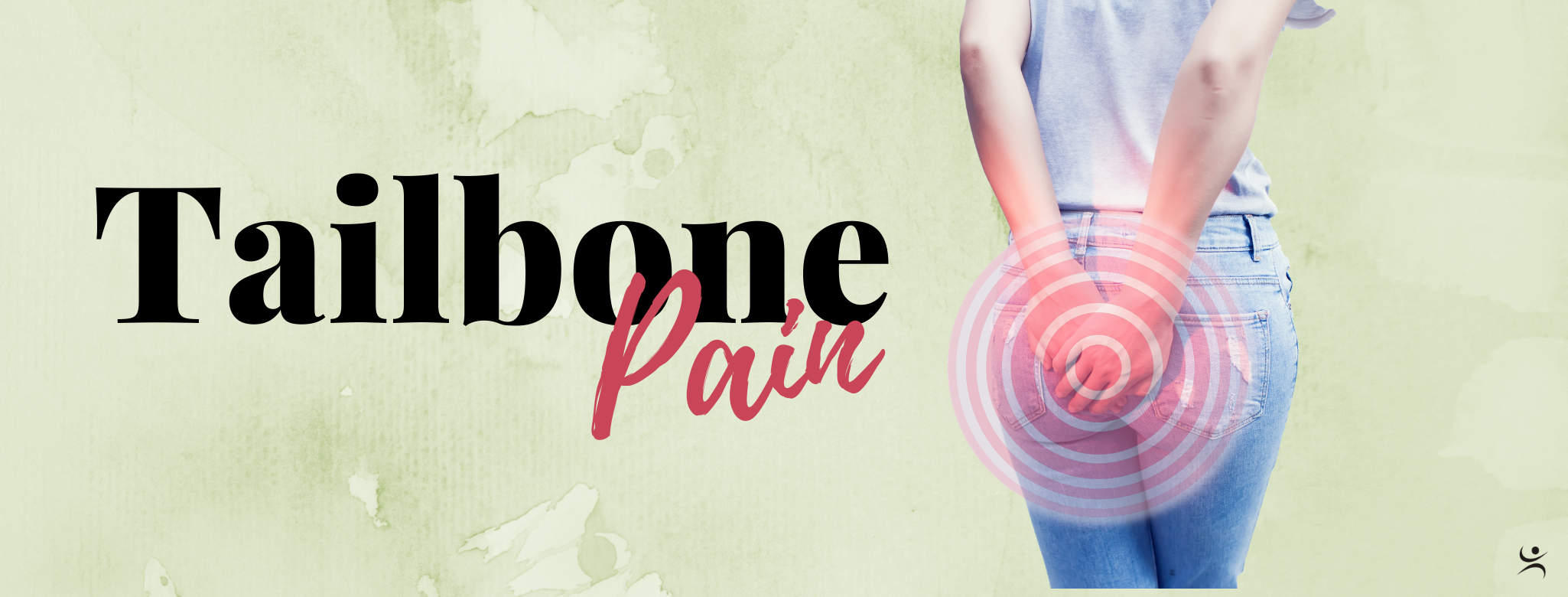Tailbone Pain (Coccyx Pain)
Are you sitting in a chair and developing a lot of tailbone pain?
Let's talk about it!
We have started to explore COVID-related pains and tailbone pain has been a big one. I've had a lot of friends and patients reach out to me about the pain they're having in their tailbone. A lot of these people tell me that they are working from home, sitting in hard flimsy chairs instead of their nice cushioned office chairs. They describe pain and soreness right in the tailbone. This tailbone pain is called coccygodynia or pain in the coccyx.
The coccyx is a small bony point at the very bottom of the bony spine. Even though it is small, it plays a big role in the stability of your sitting and it has a lot of ligaments/tendons and muscles that run over it. Generally, the pain is caused by trauma directly to the tailbone, such as when someone falls straight down on their bottom. However, we are seeing an increased incidence of this pain with people working from home on non-supportive chairs.
Essentially when you sit, you place pressure on three different pressure points, the pressure goes on the coccyx and your sitting bones called the ischial tuberosities. Prolonged sitting and especially leaning back in a chair can lead to increased pressure on the tailbone and thus pain.
What are the symptoms of tailbone pain?
Pain from an injured tailbone can result from mild to intense. The pain can get worse when sitting down, standing up from a chair, or when you leaning back while sitting in the chair. Standing or walking should relieve the pressure on your tailbone and ease the discomfort. The good news is that once you identify the source of the pain, such as an unsupportive chair, your pain will typically go away within a few weeks of avoiding that source.
What can you do to make it better?
Sitting on a heating pad or an ice pack or getting a massage may help. Correcting your posture can help because poor posture can lead to heavy pressure on your coccyx. Sit with your back against the chair and your feet flat on the ground to take the weight off your tailbone and lean forward when you sit down. Finally, you can also sit on a special donut-shaped pillow or wedge-shaped cushion to relieve the pressure on the sensitive area.
Sometimes coccygodynia can be very stubborn and may need medical attention. If the pain doesn't resolve within four to six weeks, see your doctor who may order some imaging and may give you some other options such as physical therapy, medication, and possibly injections.
I hope you found this information helpful in alleviating your tailbone pain. If you have any questions, please leave them in the comment section of our YouTube video, and don't forget to like and subscribe to our YouTube channel.
Sincerely,
Baljinder Bathla, M.D.




